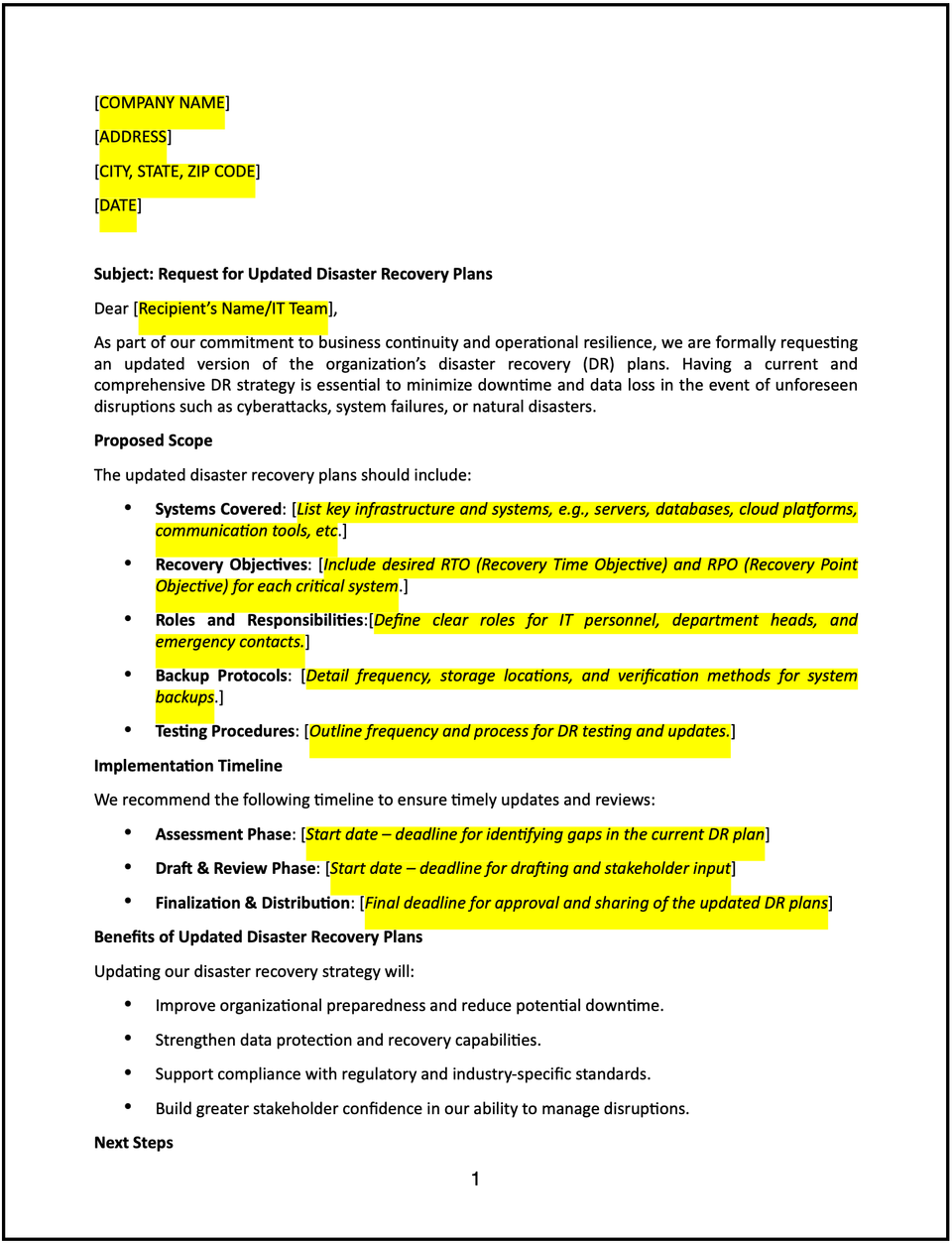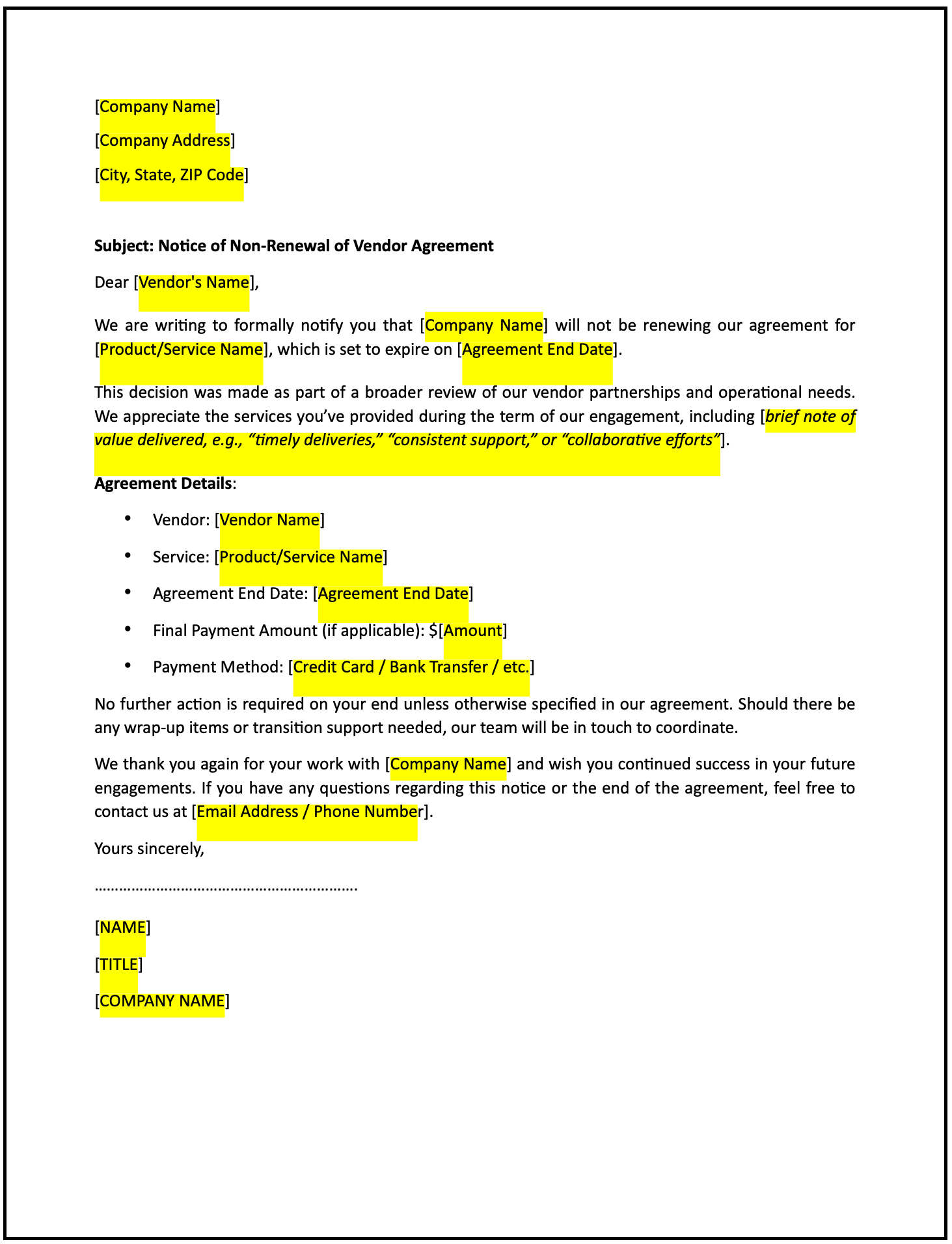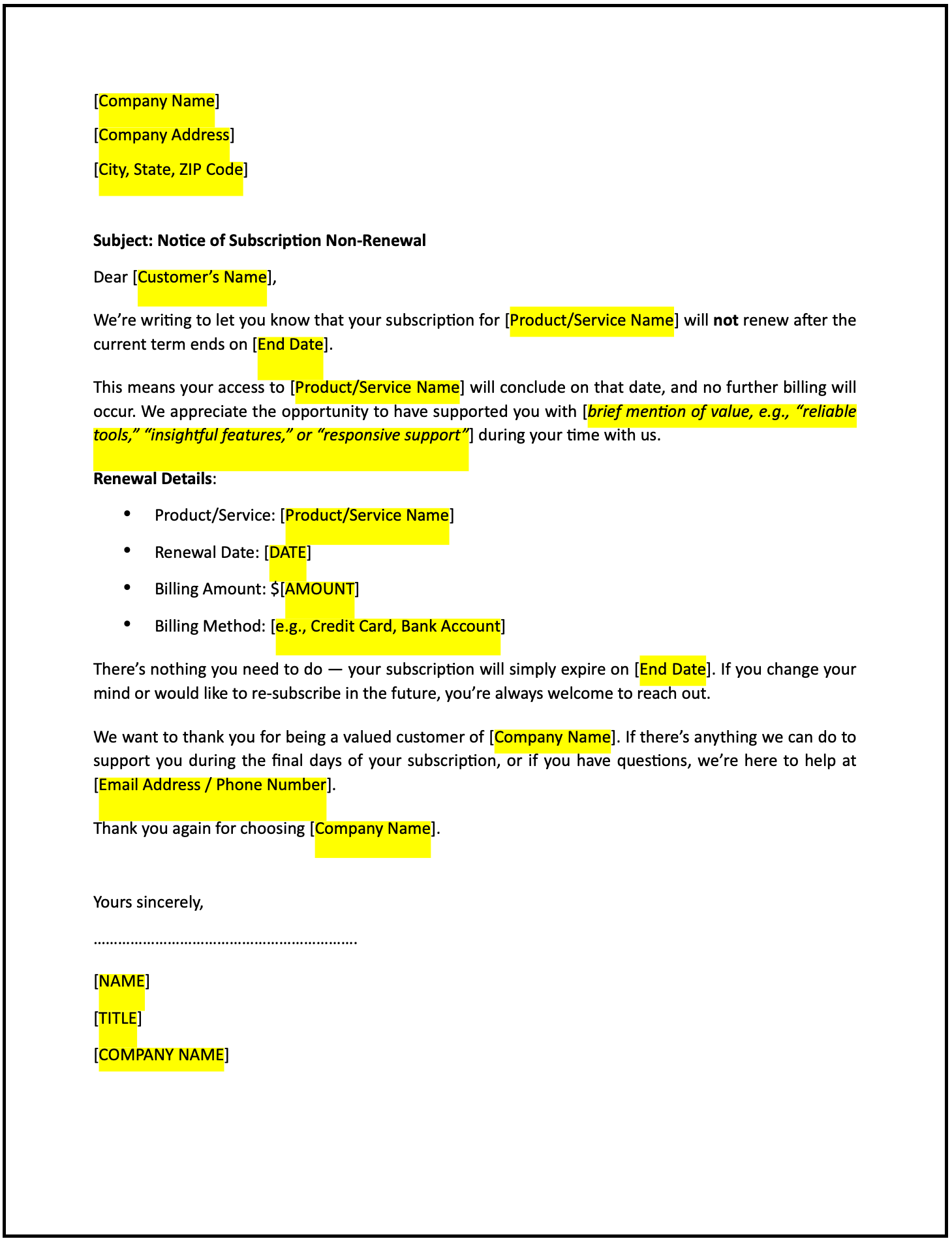Letter requesting updated disaster recovery plans: Free template

Letter requesting updated disaster recovery plans
A letter requesting updated disaster recovery plans is a formal communication used to seek revised and current disaster recovery protocols from stakeholders or partners. This letter emphasizes the importance of preparedness, outlines specific requirements, and ensures collaboration to mitigate risks and maintain operational continuity.
How to use this letter requesting updated disaster recovery plans
- Open with an introduction: Address the recipient respectfully and state the purpose of the letter—to request updated disaster recovery plans.
- Provide context: Briefly explain the importance of maintaining up-to-date disaster recovery plans, including how they align with regulatory, operational, or partnership requirements.
- Specify the request: Clearly outline the details of what you are seeking, such as revised protocols, updated contact lists, or changes in procedures.
- Highlight the benefits: Emphasize how updated plans enhance preparedness, minimize risks, and strengthen collaboration.
- Include a deadline: Specify a timeline for submitting the updated plans to ensure timely action.
- Offer support: Reassure the recipient of your willingness to assist with clarifications or provide any necessary resources.
- Maintain a professional tone: Ensure the letter is clear, respectful, and focused on fostering cooperation.
- Provide contact information: Include details for the recipient to reach out with questions or to share the updated plans.
Benefits of using a letter requesting updated disaster recovery plans
This letter provides a structured and professional way to ensure readiness and collaboration in disaster recovery efforts. Here’s how it helps:
- Promotes accountability: Clearly outlining the request ensures that all parties prioritize preparedness.
- Reflects professionalism: A well-crafted letter demonstrates respect and attentiveness to shared responsibilities.
- Enhances readiness: Encouraging updates improves resilience against potential disruptions.
- Builds trust: Transparent communication fosters collaboration and strengthens relationships.
- Supports compliance: Maintaining up-to-date plans aligns with industry standards and regulatory requirements.
Tips for writing an effective letter requesting updated disaster recovery plans
- Be specific: Clearly describe the type of updates needed, such as revised contacts, protocols, or timelines.
- Use professional language: Maintain a respectful and proactive tone to encourage cooperation.
- Provide context: Briefly explain why the updates are necessary and how they benefit all stakeholders.
- Highlight next steps: Include clear instructions for submitting the updated plans and any required format.
- Keep it concise: Focus on the key points while ensuring the tone is professional and solution-focused.
Frequently asked questions (FAQs)
Q: What details should I include in this letter?
A: Include the purpose of the request, specific updates required, a deadline, and contact details for further clarification.
Q: Should I personalize the letter?
A: Yes, addressing the recipient directly ensures clarity and demonstrates attentiveness.
Q: Who typically sends this letter?
A: Risk management teams, compliance officers, or organizational leadership typically send this letter.
Q: How formal should this letter be?
A: The tone should be professional and supportive, focusing on collaboration and preparedness.
Q: When should this letter be sent?
A: Send the letter periodically or when a significant operational or regulatory change requires updated plans.
Q: Can this letter request a meeting to discuss the updates?
A: Yes, proposing a meeting can facilitate a more detailed review and ensure alignment.
Q: Is acknowledgment from the recipient required?
A: While not mandatory, requesting acknowledgment ensures the recipient is aware of the request and taking action.
This article contains general legal information and does not contain legal advice. Cobrief is not a law firm or a substitute for an attorney or law firm. The law is complex and changes often. For legal advice, please ask a lawyer.


